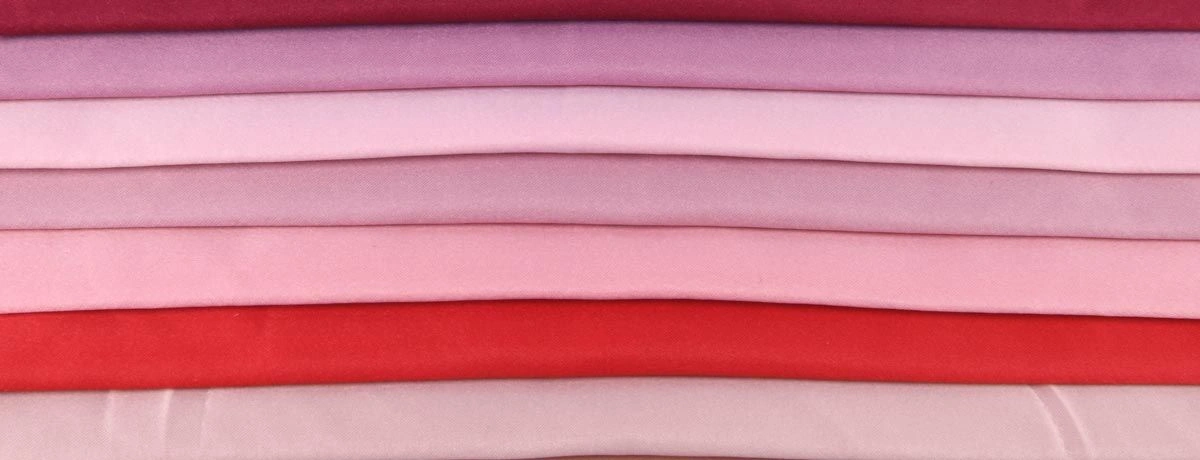Satin Weave Fabric: The Silk Debate - Is Satin Silk the Real Deal?

The Debate
The textile industry is in an uproar over whether satin silk is the real deal. With sustainable shoppers, fashion lovers and industry insiders questioning the authenticity of satin silk, we need to get to the bottom of the differences between these fabrics.
Definition and Origin
This weave involves floating warp yarns over weft yarns, creating a glossy surface that catches the light beautifully. In contrast, plain weave involves a simple crisscross pattern of warp and weft yarns, resulting in a more matte and durable fabric.
The origins of satin fabric trace back to the Chinese Han dynasty (206 BCE to 220 CE), where it was first developed for royal garments and religious vestments, symbolizing opulence and sophistication. Historically, plain weaves have been fundamental in fabric development, providing a basis for more complex weaves like satin and twill.
What is Satin Fabric?
Definition and Origin
Satin fabric is a prestigious textile renowned for its smooth and lustrous surface, attained through a specialized weaving technique known as the satin weave. This weave involves floating warp yarns over weft yarns, creating a glossy surface that catches the light beautifully. The origins of satin fabric trace back to the Chinese Han dynasty (206 BCE to 220 CE), where it was first developed for royal garments and religious vestments, symbolizing opulence and sophistication.
Brief History of Satin Fabric
The journey of satin fabric is as rich as its texture. Introduced to the West during the Middle Ages, satin quickly became the fabric of choice for royalty and the elite, thanks to its smooth and lustrous surface. The complex weaving technique that produces satin’s signature sheen made it a highly prized material. Over centuries, satin fabric evolved to include various fibers such as silk, polyester, and cotton. This evolution made satin more accessible and affordable, allowing a broader audience to enjoy its luxurious feel. Today, satin fabric continues to be a favorite for everything from elegant evening wear to sumptuous home decor.
Characteristics of Satin Fabric
Smooth and Lustrous Surface
One of the most captivating features of satin fabric is its smooth and lustrous surface. This characteristic is a direct result of the satin weave, which creates long, floating yarns on the fabric’s surface. These floating yarns give satin its signature glossy appearance, making it a popular choice for high-end garments and home decor items. The way satin fabric reflects light adds to its luxurious and elegant look, making it ideal for creating visually stunning pieces. Whether used in satin dresses, satin sheets, or slipper satin, the smooth and lustrous surface of satin fabric ensures a touch of sophistication and glamour.
What is Satin Weave Silk
Satin silk refers to a fabric defined by its weave not its material. It has a glossy surface and dull back, achieved through the satin weave. Silk satin is renowned for its luxurious qualities, making it an ideal choice for evening dresses, lingerie, and blouses. Unlike real silk which is made from the fibres of silkworms, satin silk can be made from polyester, silk or nylon.
Satin Fabric is Real Silk
Proponents say when satin silk is made from 100% silk fibres it’s real silk. They argue the same base material, silk from silkworms, can be used and it will have the same luxurious qualities as softness, luster and breathability. Satin weave fabrics are also known for their flexibility and superior draping characteristics, making them ideal for various applications. So satin silk fabric is a great option for luxury apparel and home textiles.
Polyester Satin is Not Real Silk
On the other hand, critics say the term satin silk leads to confusion because of the mixed material composition. Many satin fabrics on the market today are made from synthetic fibres like polyester which dilutes the authenticity of pure silk. Unlike satin, cotton sateen is specifically made from 100% short staple cotton and has a distinct weave, making it more durable and suitable for everyday use. This is important for consumers looking for traditional silk products.
Sustainability
From a sustainability perspective satin silk production varies depending on the composition. Traditional silk production is labour intensive but biodegradable. Variations in texture and drape associated with different harness counts in harness satin weave also play a role in the sustainability of the fabric. Satin silk made from synthetic fibres like polyester has a larger carbon footprint because of non-renewable sources and its long degradation process. For sustainable shoppers it’s important to understand these subtleties when making eco-friendly purchasing decisions.
Consumer Guidance
To tell satin silk from traditional silk consumers and industry insiders should:
-
Check Labels: Always read the fabric label to see the fibre content.
-
Understand Weaves: Satin refers to the weave not the fibre.
-
Assess Needs: Consider the end-use, does it need the luxury of pure silk or the affordability and durability of synthetic satin.
-
Prioritise Sustainability: For eco-friendly options prioritise fabrics with certifications for sustainable practices.
Conclusion
The debate over satin silk being real silk is about material composition and consumer expectations. Satin silk has many qualities of real silk but its authenticity varies. Looking forward industry will develop clearer categorisations and more sustainable production methods. For now informed purchasing decisions are key to navigating this complex textile world.
